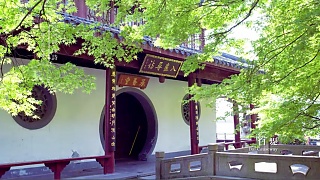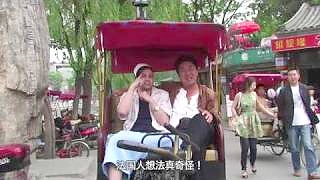
|
With Wei's Travel ...
Visitor Guide to QingXi Ancient Water Town
Getting There
From ShangHai:
Metro Line 8 (Jiangyue Road Station) - Jiangwu Line/Jiangwu Line Section, after 18 stations, arrive at Qingcun
By Train: Take a high-speed train from ShangHai Hongqiao Railway Station to Kunshan South Railway Station. The journey takes about 20-30 minutes. From Kunshan, you can take a taxi or local bus to QingXi Ancient Water Town.
By Bus: There are direct buses from ShangHai to Kunshan. The bus journey takes around 1-1.5 hours.
By Car: If you prefer to drive, the trip from ShangHai to QingXi takes approximately 1-1.5 hours via the G2 Beijing-Shanghai Expressway.
Entrance and Tickets
Entrance Fee: Entrance to the water town is generally free, but certain attractions and museums within the town may charge a small fee.
Opening Hours: The town is open to visitors all day, but specific attractions and shops usually operate from 8:00 AM to 5:00 PM.
Attractions and Activities
Waterways and Bridges
Boating Tours: Take a traditional gondola ride along the scenic waterways. The boat tours offer a unique perspective of the town’s ancient bridges, historic buildings, and daily life along the canals.
Historic Bridges: QingXi boasts numerous ancient stone bridges, each with its own history and architectural style. Notable ones include the Taiping Bridge and Zhenfeng Bridge.
Historic Architecture
Traditional Houses: Stroll through the town's narrow lanes and admire the well-preserved Ming and Qing dynasty houses. Many of these houses have distinctive white walls, black tiles, and wooden carvings.
Old Town Square: The central square often hosts traditional performances, markets, and cultural events, giving you a taste of local life and traditions.
Cultural and Historical Sites
QingXi Ancient Academy: Visit this historic educational institution to learn about the town's academic heritage and traditional Chinese education.
Temples and Shrines: Explore local temples and shrines, such as the QingXi Temple, to experience the town's spiritual side and admire religious architecture.
Museums and Exhibitions
Folk Custom Museum: This museum showcases local crafts, traditional costumes, and cultural artifacts, providing insights into the daily lives and customs of the town’s residents.
Silk Museum: Learn about the region's rich history of silk production, including traditional silk weaving techniques and displays of exquisite silk products.
Dining and Local Specialties
Riverside Restaurants: Enjoy a meal at one of the many riverside restaurants offering local delicacies. Freshwater fish, shrimp, and crabs are popular choices.
Local Snacks: Try traditional snacks like Zongzi (sticky rice dumplings), Osmanthus cake, and hand-pulled noodles. Street vendors and small eateries throughout the town offer these treats.
Tea Houses: Relax in a traditional tea house, sipping on local teas and enjoying the serene water town atmosphere.
Shopping
Souvenir Shops: Browse the numerous shops selling local handicrafts, silk products, and traditional clothing. These make great souvenirs and gifts.
Antique Markets: Explore antique shops and markets where you can find unique items such as vintage coins, pottery, and old books.
Tips for Visitors
Best Time to Visit: The best times to visit QingXi are during the spring (March to May) and autumn (September to November) when the weather is pleasant, and the scenery is at its most beautiful.
Clothing: Wear comfortable walking shoes and dress in layers to adjust to changing temperatures. Bring an umbrella or raincoat if visiting during the rainy season.
Respect Local Customs: Be respectful of local customs and traditions, especially when visiting temples and historical sites.
Conclusion
QingXi Ancient Water Town offers a tranquil escape from the urban hustle of ShangHai, allowing visitors to immerse themselves in China's rich cultural heritage and natural beauty. With its picturesque canals, historic architecture, and vibrant local culture, QingXi is a destination that promises a memorable and enriching experience.
|





 Traditional Chinese style oiled paper and bamboo umbrella
Traditional Chinese style oiled paper and bamboo umbrella












